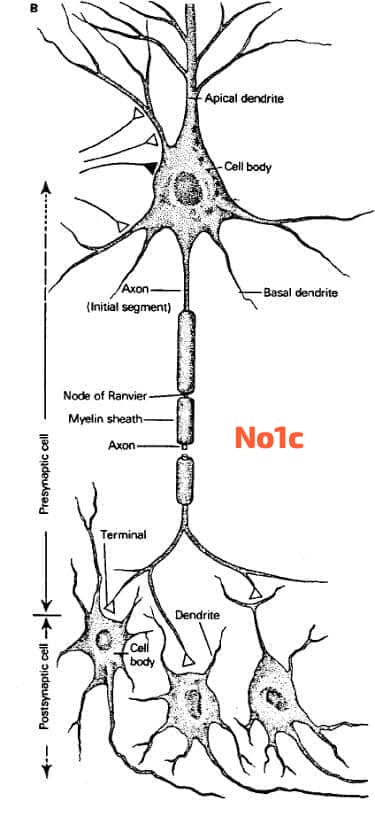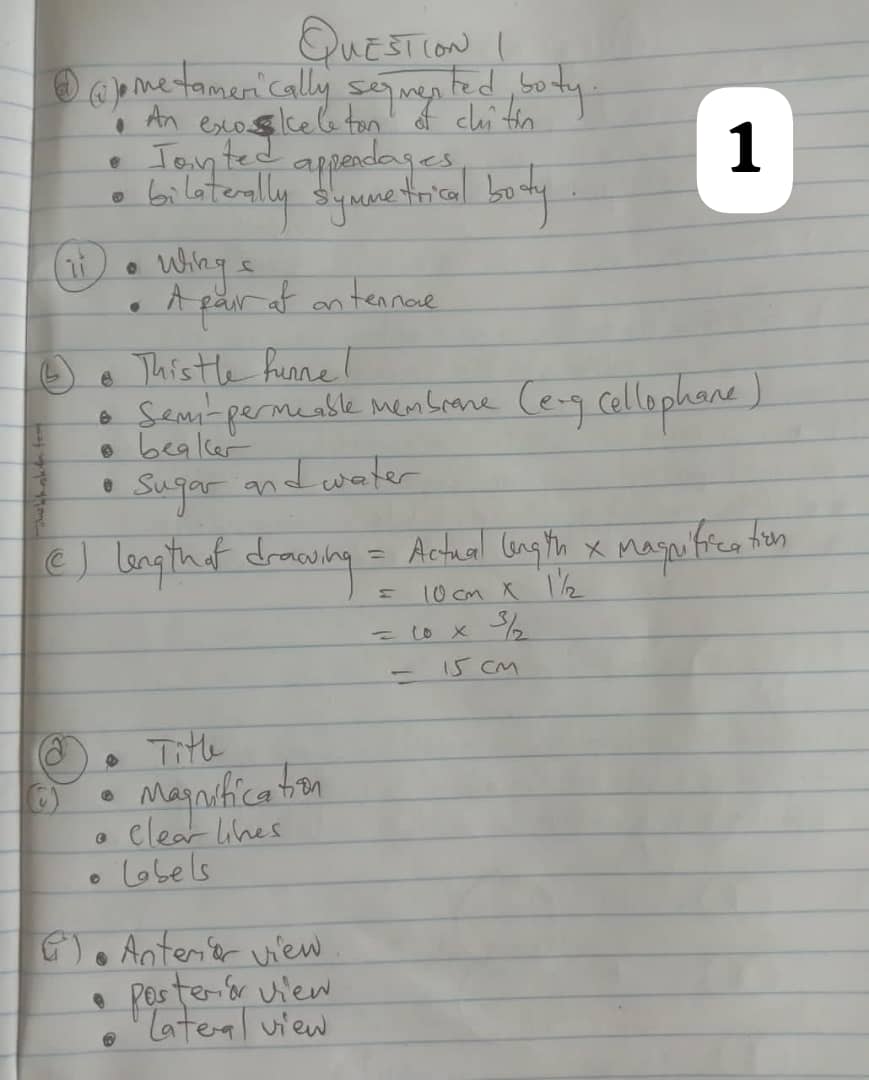The West African Examination Council Has Scheduled The 2025 WAEC Biology Practical Questions And Answers paper to kick off on 15th May 2025. This triggers the candidates writing the paper into searching for WAEC Biology Practical Expo 2025, WAEC biology past questions and answers so as to start preparation for the exam.
In this post, we have shared with you the 2025 WAEC Biology Practical Questions And Answers which will guide you towards your exam preparation.

CLICK HERE TO PAY & GET IT NOW
2025 WAEC Biology Exam Format
WAEC Biology 2025 paper is divided into two parts:
PAPER 1: This paper consist of 50 objectives questions which candidate will answers in 50 minutes for 50 marks
PAPER 2: the paper 2 consist of 6 essay questions which is divided in to two sections.
- SECTION A: This section, comprises 4 questions
- SECTION B: Section B is for Ghanian candidates only, and questions are drafted from the section of the waec biology syllabus.
- SECTION C: this section is for both Nigeria, Liberia, Sierra lion And Gambian Candidates.
Candidates are required to answers 2 questions in section A, one question from either section B or C.
The economics essay paper will last for 1 hour, 40 minutes and also carried 70 marks.
2025 WAEC Biology Practical Questions And Answers Expo
We have made it easy for you to access 2025 WAEC Biology answers by providing two convenient subscription methods:
1. Online PIN (₦1000)
Get access PIN to view verified answers online on our answer page. Answers will be delivered 4 hours before the exam starts.
2. WhatsApp Delivery (₦1000)
Get the answers directly on WhatsApp after confirmation of your subscription. Get the answers delivered straight to your phone.
How to Subscribe
Here is the simple procedure one should follow in order to secure his/her access:
- Pay The Subscription Fee:
Use any preferred payment method. For account details, chat with us on WhatsApp at 08023429251.
- Provide the Required Details:
Send the following information to 08023429251 on WhatsApp:
- Evidence of payment (e.g., transfer receipt or sender’s name).
- The subject you’re subscribing for (e.g., WAEC GCE Biology).
- Your phone number.
Once your payment is confirmed, the answers will be delivered based on your preferred method.
READ: 2025 WAEC Civic Education Questions and Answers
Why Choose masterWAEC?
Here are the reasons why thousands of candidates trust masterWAEC.com for their exam preparation:
1. Verified Answers: We deliver accurate solutions designed to guarantee success.
2. Timely Delivery: Answers will be delivered at least 4 hours before your exam time or by midnight.
3. Flexible Subscription Methods: Use whatever method that works for you, whether it is online PIN or WhatsApp delivery.
4. Dedicated Support: Our support team is always ready to attend to any issues or questions you might have.
Join the WAEC Miracle Center
Join our private WhatsApp group, where we will be providing:
- Verified answers
- Timely updates
- Pro tips to aid your success
CBT WAEC Biology Past Questions And Answers 2025
(1ai)
Homeostasis refers to the ability of the body or a system to maintain a stable internal environment despite changes in external conditions.
(1aii)
(i) Kidney.
(ii) Liver.
(iii) Pancreas.
(1c)

(2a)
UNDER PRIMARY SUCCESSION
(i) Occurs in areas where no soil or vegetation existed before, such as after a volcanic eruption or glacier retreat.
(ii) Starts from scratch, with no remaining vegetation or soil.
UNDER SECONDARY SUCCESSION
(i) Occurs in areas where soil and vegetation were previously present, but were disturbed or damaged, such as after a forest fire or clear-cutting.
(ii) Starts with remaining vegetation, such as seeds, roots, or stumps.
(4a)
(4b)
Type of Inheritance Illustrated The type of inheritance illustrated in this cross is -incomplete dominance. In this form of inheritance, neither allele is completely dominant over the other, resulting in a blending of traits in the phenotype of the offspring.
(4c)
Mechanism of Incomplete Dominance In incomplete dominance, the alleles for a trait blend together in the phenotype of the heterozygous offspring. In this case, the red allele (R) does not completely mask the expression of the white allele (r). Instead, when an R allele is combined with an r allele, the resulting phenotype is an intermediate color—in this case, pink flowers. This occurs because the expression of the alleles produces a phenotype that is a mixture of both parental traits, rather than one being dominant over the other.
(4d)
Test Cross with F1 Offspring A test cross involves breeding an individual of unknown genotype with a homozygous recessive individual to determine the genotype of the former. Let’s analyze the outcomes based on the F1 offspring (Rr), which are pink flowered.
(4di)
Genotype of the Parent The genotype of the parent used in the test cross is rr (homozygous recessive).
(4dii)
Phenotypes of the Result of the Cross The phenotypes of the result of the cross will be: – Pink flowers (Rr) – White flowers (rr)
(4diii)
Genotypes of the Result of the Cross The genotypes of the result of the cross will be: – Rr (pink) – rr (white)
(4div)
Genotypic Ratio of the Offspring Obtained The genotypic ratio of the offspring obtained from the test cross will be: – 1 Rr : 1 rr This means that there is a 50% chance for each genotype, resulting in a genotypic ratio of 1:1 for Rr (pink) and rr (white). This comprehensive analysis illustrates the principles of inheritance and the effects of dominant and recessive alleles on phenotypic expression.
WHATSAPP US @ 07065573768 TO SUBSCRIBE AND GET THE FULL SOLUTIONS BEFORE EXAM.
2025 WAEC GCE Biology Questions And Answers
Section A
Answer two questions only from this section.
1. (a) In a practical class, a teacher provided students with an organism belonging to Phylum Arthropoda.
(i) State four features that would be used to place the organism in its Class. [4 marks]
(ii) State two features on the organism that could be used to determine its habitat. [4 marks]
1. (b) List four items needed to successfully carry out an experiment on osmosis in the laboratory. [2 marks]
1. (c) If the actual length of an object is 10 cm and the magnification of the drawing of the object is 4124 \frac{1}{2} times its actual length, what is the length of the drawing? [3 marks]
Section B
Answer the compulsory question and one other question.
2. (a) Explain briefly the following terms: (i) Ecology [2 marks]
(ii) Ecosystem [2 marks]
(iii) Biosphere [2 marks]
2. (b) List two main components of an ecosystem. [2 marks]
3. (a) What are courtship behaviors in animals? [2 marks]
3. (b) List three courtship behaviors in animals. [3 marks]
4. State two differences between tactic and nastic movements in plants. [2 marks]
5. Give two examples each of plants that show:
(i) Tactic movement [2 marks]
(ii) Nastic movement [2 marks]
6. State three differences between DNA and RNA. [3 marks]
ANSWERS
(1)

(2a)
The feces of lizards are more solid than those of mammals due to the differences in their digestive systems. Lizards are ectothermic, meaning they rely on external sources of heat to regulate their body temperature. This slower metabolism allows them to extract more water from their food, resulting in more solid and less watery feces compared to the typically more liquid feces of mammals.
(2b)
(PICK ANY FIVE)
(i) Saliva
(ii) Gastric juice
(iii) Pancreatic juice
(iv) Bile
(v) Intestinal juice (from the small intestine)
(vi) Mucus
(2c)
(PICK ANY THREE)
(i) Pepsin
(ii) Trypsin
(iii) Chymotrypsin
(iv) Elastase
(v) Carboxypeptidase A
(vi) Carboxypeptidase B
(2di)
(PICK ANY THREE)
(i) Both are biological catalysts
(ii) Both are involved in regulating biological processes
(iii) Both are produced by specialized cells or tissues
(iv) Both have a specific target or substrate
(v) Both require specific conditions (temperature, pH, etc.) to function optimally
(vi) Both can be affected by inhibitors
(2dii)
In Tabular Form
=HORMONES=
(PICK ANY THREE)
(i) Act as signaling molecules
(ii) Transported in the bloodstream
(iii) Influence distant target cells
(iv) Regulate complex processes
(v) Act at low concentrations
(vi) Have long-lasting effects
=ENZYMES=
(PICK ANY THREE)
(i) Act as catalysts
(ii) Act locally at the site of their production
(iii) Influence specific chemical reactions
(iv) Facilitate specific metabolic processes
(v) Act at higher concentrations
(vi) Have short-lived effects
(2e)
(i) Glucose – 1 molecule
(ii) Water – 6 molecules
(iii) Oxygen – 6 molecules
(3ai)
Ecology is the study of the relationships between living organisms and their environment. It examines how living things interact with each other and with the non-living components of their environment, such as air, water, and soil.
(3aii)
An ecosystem is a community of living organisms (plants, animals, and microorganisms) interacting with each other and with their physical environment. The components of an ecosystem are interdependent and form a complex web of relationships.
(3aiii)
The biosphere is the part of the Earth’s environment that supports life. It includes all the living organisms on the planet, as well as the physical environment they inhabit, such as the atmosphere, hydrosphere, and lithosphere.
(3bi)
(PICK ANY TWO)
(i) Producers
(ii) Consumers
(iii) Decomposers
(iv) Abiotic factors
(3bii)
(PICK ANY TWO)
(i) Producers: Organisms that can synthesize their own food, usually through photosynthesis, and form the base of the food chain.
(ii) Consumers: Organisms that obtain energy by consuming other organisms, either directly (herbivores) or indirectly (carnivores and omnivores).
(iii) Decomposers: Organisms that break down dead organic matter, releasing nutrients back into the environment for reuse by producers.
(iv) Abiotic factors: The physical and chemical components of the environment, such as water, air, soil, and sunlight, which provide the necessary resources and conditions for life.
(3ci)
(PICK ANY FOUR)
(i) High species diversity
(ii) Lush vegetation and dense canopy
(iii) Warm and humid climate year-round
(iv) High rainfall (typically over 2,000 mm per year)
(v) Nutrient-poor soil
(vi) Vertical stratification of the vegetation
(3cii)
(PICK ANY TWO)
(i) Tall, straight trunks to reach the canopy and compete for sunlight
(ii) Broad, flat leaves to maximize light absorption for photosynthesis
(iii) Buttress roots to provide stability in the shallow, nutrient-poor soil
(iv) Ability to shed leaves during the dry season to conserve water
(v) Bark that is resistant to fire and pests
(vi) Seed dispersal mechanisms.
(4ai)
Organic evolution refers to the process by which species of living organisms change over time through variations in traits, inheritance, and natural selection. It is the gradual development of new species from common ancestors through genetic changes and adaptation to their environment.
(4aii)
(i) Fossil Record
(ii) Comparative Anatomy
(iii) Embryology
(iv) Molecular Biology
(v) Biogeography
(4bi)
The Theory of Use and Disuse suggests that body parts or organs that are used frequently become stronger and more developed, while those that are not used may diminish or disappear over generations. The idea is that environmental demands lead to the development or reduction of certain features based on their utility
(4bii)
Jean-Baptiste Lamarck.
(4biii)
(i) Giraffes
(ii) Aquatic organisms (like amphibians and their legs)
(4c)
Mutation refers to a sudden, random change in the genetic material (DNA) of an organism. Mutations introduce new genetic variations in a population. Some mutations are beneficial, giving organisms a survival advantage and thus increasing the likelihood of passing on these traits to future generations. Over time, these beneficial mutations accumulate and contribute to the evolution of new species
(4d)
(i) Aestivation: Lizard
(ii) Basking: Bat
(iii) Territoriality: Monkey
(iv) Hibernation: Polar bear
(5a)
(i) Kills the protoplasm of the leaf and stops all enzyme activities in the cells.
(ii) To extract the chlorophyll from the leaf.
(iii) To distribute equal heat uniformly in the leaf.
(iv) To soften the tissues.
(5bi)
Courtship behaviour in animals consists of instinctive behaviours in response to certain external stimuli.
(5bii)
(i) Pairing
(ii) Display
(iii) Territoriality
(5ci)
TABULATE
=NASTIC=
(i) Direction of the movement is independent of the direction of the stimulus
(ii) Movement shown by part of a plant
=TASTIC=
(i) Movement is oriented towards the direction of the stimulus
(ii) Movement of whole organisms/entire plant.
ALSO READ: 2025 WAEC Economics Questions And Answers
Conclusion
This post has provided you with sample questions to guide you on your biology exam preparation. By using this information and staying committed to your preparation, you can approach the exam with confidence and achieve excellent results.
Dont forget to revisit this page for guidance as the exam approaches. Best of luck in your 2025 WAEC Biology examination!

Kolade Kayode, known as Mr. KK, I am a Nigerian education blogger and founder of MasterWAEC.com. Passionate about student success, I simplifies WAEC exam preparation with accurate tips and resources to help students excel.


Good morning